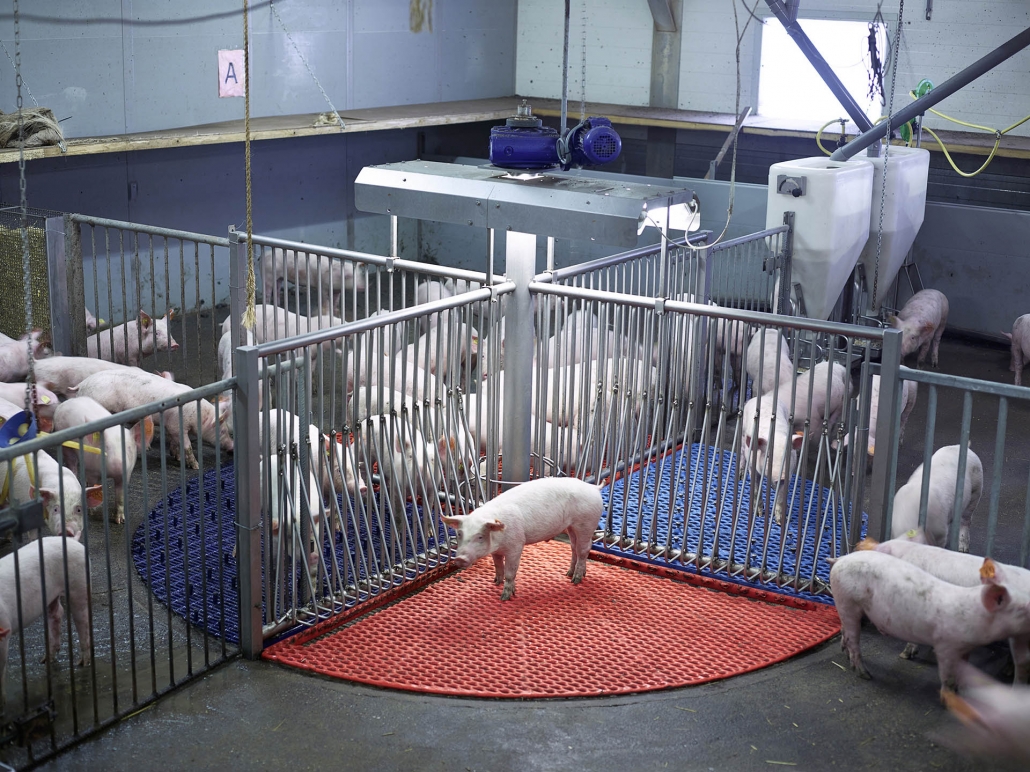FOOD, CTRL-X - A TOPOGRAPHY OF E-WASTE - GOLD RIVERS . TALES FROM THE LAND IN BETWEEN
This post is also available in:
 French
French
FOOD
Photographies by Henk WILDSCHUT
There are few subjects that give rise to lively debates as food does. These debates are all the more marked by a certain suspicion and a certain pessimism concerning the way our food is produced. Two years ago, when the Rijksmuseum of Amsterdam asked me to look into the issue of food, I used to have many prejudices about the food industry. I considered it dishonest, unhealthy and with a questionable ethic. In my opinion, it also contributed to the decline of our planet, as opposite to the good old methods used in the past, and I thought that the ”bio”, a magic word, would solve everything.
When I embarked on this project, I immediately decided to shed light once and for all on misunderstandings related to food. (…) I quickly discovered that the economic pressures and the legislation related to public health, environment and animal welfare dictates the way adopted by many of the leading companies in this sector. To survive, they have to abandon the traditional production processes for industrial methods whose key words are efficiency and expansion. This is also true in regard to organic farming. Add to this the fact that today, at the slightest missteps, producers are subjected to the pitiless judgment of inspection bodies and consumers. After two years of research where I took many shots, I realized that the agri-food discourse could be indefinitely refined and that it often allows us to examine its supposed advantages or disadvantages in a new light. For example, increasing production is really able to improve animal welfare, and organic farming is not always better for the environment. Therefore, an overly one-sided approach to the question of food often creates an obstacle to the invention of real solutions. This subject is simply too vast and complex to be resumed in a single sentence or to be described in a Manichean manner.
CTRL-X, A TOPOGRAPHY OF E-WASTE
Photographies by Kai LOFFELBEIN
Kai Löffelbein has followed the paths of electronic waste from Europe and the United States up to the post-apocalyptic landscape of Agbogbloshie in Ghana, to the city of Guiyu in China for electronic waste, and to the workshops of the backyards of New Delhi.
He meticulously documents the appalling conditions in which workers, sometimes even children, try to recover the precious raw materials contained in our electronic waste illegally exported from the West to avoid costly recycling process.
In these dark images, we can guess the vague contours of barefooted men, putting displays on their heads, walking on a carpet of ashes and burning garbage. We can see the tired eyes of women who are heating circuit boards on gas burners, their faces barely covered with pieces of cloth. We discover the strange and disturbing beauty of the tablecloth of chemicals exhaling toxic green, pink and turquoise.
We can see scarred hands and arms, submerged to the armpits in a poisoned acid magma, crouching children who are using stones to shatter screens. This is how the once precious remnants of our modern computer age are dismantled with the most rudimentary tools. This is how much of our waste causes immense ecological damage and threatens the health of numerous men, women and children.
GOLD RIVERS – TALES FROM THE LAND IN BETWEEN
Photographies by Mathias DEPARDON
The drought experienced by Iraq in 2018 is the most severe that the country has known since 1930. It’s a second death feared by the Marshes of Mesopotamia, a vast swampy expanse at the confluence of the Tigris and Euphrates, an unique wealth of this Mesopotamian region, cradle of the ancient Sumerian and Assyrian civilizations.
In 1991, Saddam Hussein condemned it to dryness by building dykes to expel the Shia rebels entrenched there. The region became then quickly emptied of its population. After the fall of the Iraqi dictator, residents destroyed the dams and released the waters.
In 2016, these swamps were placed on the UNESCO World Heritage List. Nowadays, the flooded area of ??the Iraqi Marshes became as reduced as never before. Before 1990, it reached up to 13,000 km2 against barely 1600 km2 today.
The mismanagement of resources by the Iraqi central government and the construction of several upstream dams (GAP Project) in Turkey have greatly weakened the rivers of Mesopotamia.
The traditional agriculture of this region, long seen as the ”Garden of Eden of Iraq”, bears the brunt of the impact of salinization. Its unique biosphere, its ancestral culture and its economic equilibrium based on fishing, buffalo farming and reed cutting are once more at risk of extinction.
Only a solution agreed by the riparian countries of the Tigris and Euphrates can prevent the disappearance of the Marshes of Mesopotamia and a major ecological disaster. Otherwise, the rapid drying up of southern Iraq may provoke the next conflict.
From 21/09/2019 to 05/01/2020
Le Quadritalère
22 rue Saint-Pierre
60000 BEAUVAIS
France
Opening hours : Tuesday to Friday from 12pm to 6pm, Saturday and Sunday from 10am to 6pm
Phone : 03 44 15 67 00
www.photaumnales.fr



